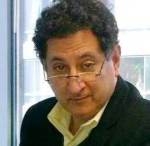Updated
Biz Brief: Manufacturing across Sectors Shows Continued Growth: Government Policies in Partnerships with Private Sector Make Buildup of Key Supply Chain Companies Supports Growth in Textiles Industry – Jean R. AbiNader
Jean R. AbiNader, MATIC
August 9, 2017
Positive economic news in the manufacturing sectors highlights the latest business reports for Morocco, as it launches a textile promotion tradeshow, sees a jump in tourism, and notes the success of its Industrial Acceleration Plan focusing on building industry eco-systems.
After several starts, Morocco seems to have the ‘right’ industrial strategy. Launched in 2014, the Industrial Acceleration Plan (IPA) is paying growth dividends for Morocco. It is based on supporting supply-chain and related manufacturing that feeds into the larger auto and aeronautics industries. These “eco-systems” are not limited to these sectors but can also be part of the agri-food, textiles, and medical devices sectors.
According to the Minister of Trade, Industry, Investment, and the Digital Economy, Moulay Hafid Elalamy, the results to date have exceeded initial projections. Focusing on the high-tech sectors, the IPA identified sourcing needs and worked to attract those companies and technologies to Morocco.
For example, this strategy was instrumental in attracting group PSA Peugeot-Citroen, Boeing, and others to set-up eco-systems for their sectors, creating thousands of high-value jobs. The eco-system has many moving parts – available and service-ready land at reasonable or incentivized prices, competitive financing, sufficiently qualified human resources, full service and well-located logistics systems, and local suppliers with efficient support capabilities. So, although it may be targeting a specific sector, the extended benefits of an eco-system are attractive to other industries as well.
In Morocco, the article points out, “In terms of human resource training, careful work was done to accurately break down the 485,450 jobs to be created per year, by skill profile and by region.” This, and reforms being enacted by the government, are crucial to the strategy’s long-term success. “Significant progress has been made in the Industrial Integration Plan (2014-2020). At the mid-term, no fewer than 47 “ecosystems” have been launched in various industrial sectors, which have already secured 97% of the expected job creation target (500,000 jobs).
Can the textile sector remain vibrant? Despite Morocco’s strong presence in the global textile sector, its companies face increased competition from many countries, increasingly from Africa where low wage rates make production relatively inexpensive. Morocco is working to emphasize the quality and time-sensitive responsiveness of its products to entice new buyers and keep current clients.
A key effort is the upcoming “Maroc in Mode – Maroc Sourcing” to be held in Marrakech in October. More than 175 exhibitors from Turkey, Tunisia, China, Belgium, Germany, Spain, France, Portugal, and Egypt will participate in this 15th edition of Maroc in Mode and the 14th edition of Maroc Sourcing.
Morocco has increased its textile exports over the past five years, largely as a result of introducing a series of eco-systems that support specialized production for both companies and their suppliers. Operating at international standards, companies agree to invest in new machinery and R&D to enhance the industry’s future. This has a positive impact on the companies, as well as on suppliers, which benefit from adapting to modern techniques.
According to the drapersonline.com article, “Morocco is recognized as a major player in ‘fast fashion’ with regards to its longstanding and established experience with the biggest vertical fast fashion brands and retailers in the world. One of its major competitive advantages lies in its proximity to Europe, and therefore its ability to react immediately to new trends, allowing them to be delivered with a very quick turnaround.”
Mohamed Tazi, Director General of the Moroccan Textile and Apparel Industry Association (AMITH), emphasized that “The advantage of quick response has made Morocco an important partner in the business as permanent changes and new programs have to be delivered to the stores all over the year. But also the united power of the fashion industry together with governmental support assists to steadily improve the high standards of fashion. Speed, acceleration and frequency of new fresh fashion are a key condition for success.”
A new feature of this year’s show is an area focusing on leather goods and footwear. “For the first time, around 20 Moroccan companies from the leather and footwear sector will be participating. Alongside the 175 exhibitors, around 1,500 specialist visitors are expected – from Europe, Africa, and the US.” A great opportunity for Morocco to step up its textile game.
Tourism moves on. Another sector experiencing positive results is Morocco’s tourism industry, which is outperforming its neighbors and attracting new overseas visitors. According to Oxford Business Group (OBG), in reference to a report from the General Directorate for National Security (DGSN), which tracks incoming visitors, Morocco’s visits are up 10% from the same period last year. “In April alone, both international arrivals and the number of expatriates visiting home increased, up 18% and 9.5%, respectively, year-on-year (y-o-y). Overall, visitor numbers for the month were up 14.7% y-o-y.”
“According to Mohamed Sajid, the Moroccan minister of tourism, the industry is on track to expand by 5.5% y-o-y in 2017, with overall visitor numbers reaching 10.9m. Revenue, meanwhile, is forecast to reach $6.5bn, up from $6.4bn in 2016.”
Now that it has relaxed entry requirements for Chinese nationals, an increase of more than 200% is expected in 2017, from 42,000 to 100,000 visitors. An increase in direct flights between the two countries will lead to additional travelers. “In another initiative, a delegation from China visited Morocco in June to evaluate the country’s tourism potential. Representatives from travel agencies based in Beijing, Shanghai, and Guangzhou, and the media visited several of Morocco’s best known cities, including Marrakech, Tangiers, Casablanca, Rabat, and Fez.”
